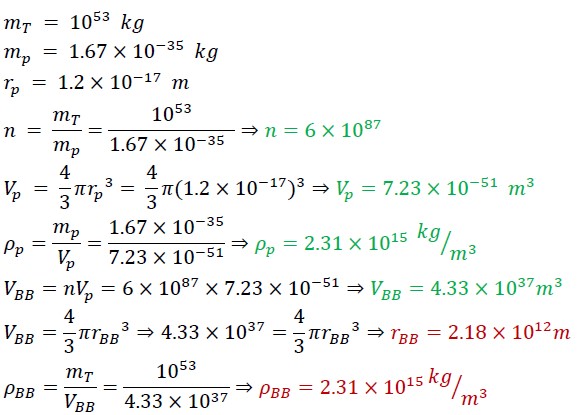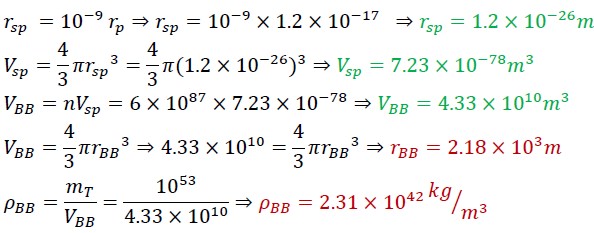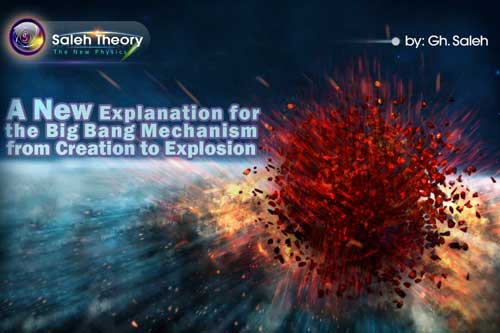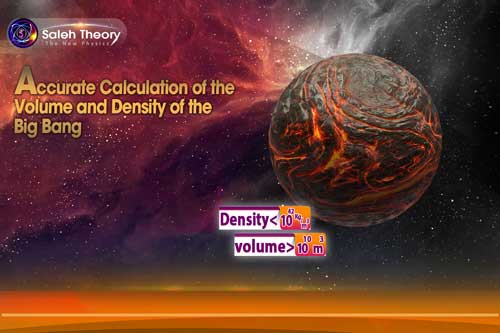
Accurate Calculation of the Volume and Density of the Big Bang
Considering that the smallest, fastest, and lightest object in the universe is photon and the universe mass is about 1053𝑘𝑔, if we consider the photon as the basis of the Big Bang, the volume and density equations are as follows:
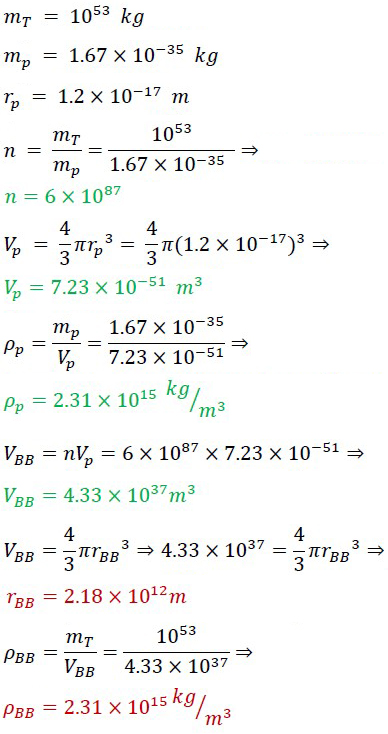
Where 𝑚𝑇 is the total mass of universe, 𝑛 is the number of photon, 𝑚𝑝, 𝑟𝑝, 𝑉𝑝 𝑎𝑛𝑑 𝜌𝑝 are the mass, radius, volume and density of the photon and 𝑟𝐵𝐵, 𝑉𝐵𝐵 𝑎𝑛𝑑 𝜌𝐵𝐵 are the radius, volume and density of the Big Bang sphere.
According to the data, it can be said that if the existing sphere at the moment of the Big Bang was made of photons, by such a volume and mass, it is by far different from the information that obtained for the Big Bang before. In other words, the photon is not the desired particle that could have formed the Big Bang sphere.
Therefore, we define a special particle called “sub-photon” with dimensions of one billionth of a photon (in terms of radius value).
By using this particle, the calculations are as follows:
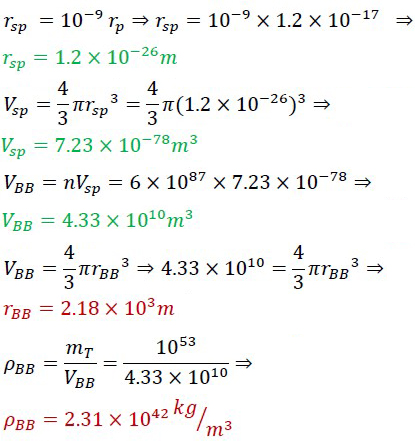
Where 𝑟𝑠𝑝 𝑎𝑛𝑑 𝑉𝑠𝑝 are the radius and volume of the “sub-photon”.
Due to obtained values, this fundamental particle is capable of defining the Big Bang phenomenon. It can be said that for the Big Bang, a density higher than 1042 𝑘𝑔/𝑚3 and a volume less than 1010 𝑚3 cannot be imagined.
Therefore, the density of the Big Bang is definitely less than 1042 𝑘𝑔/𝑚3 and its volume is undoubtedly more than 1010 𝑚3.

